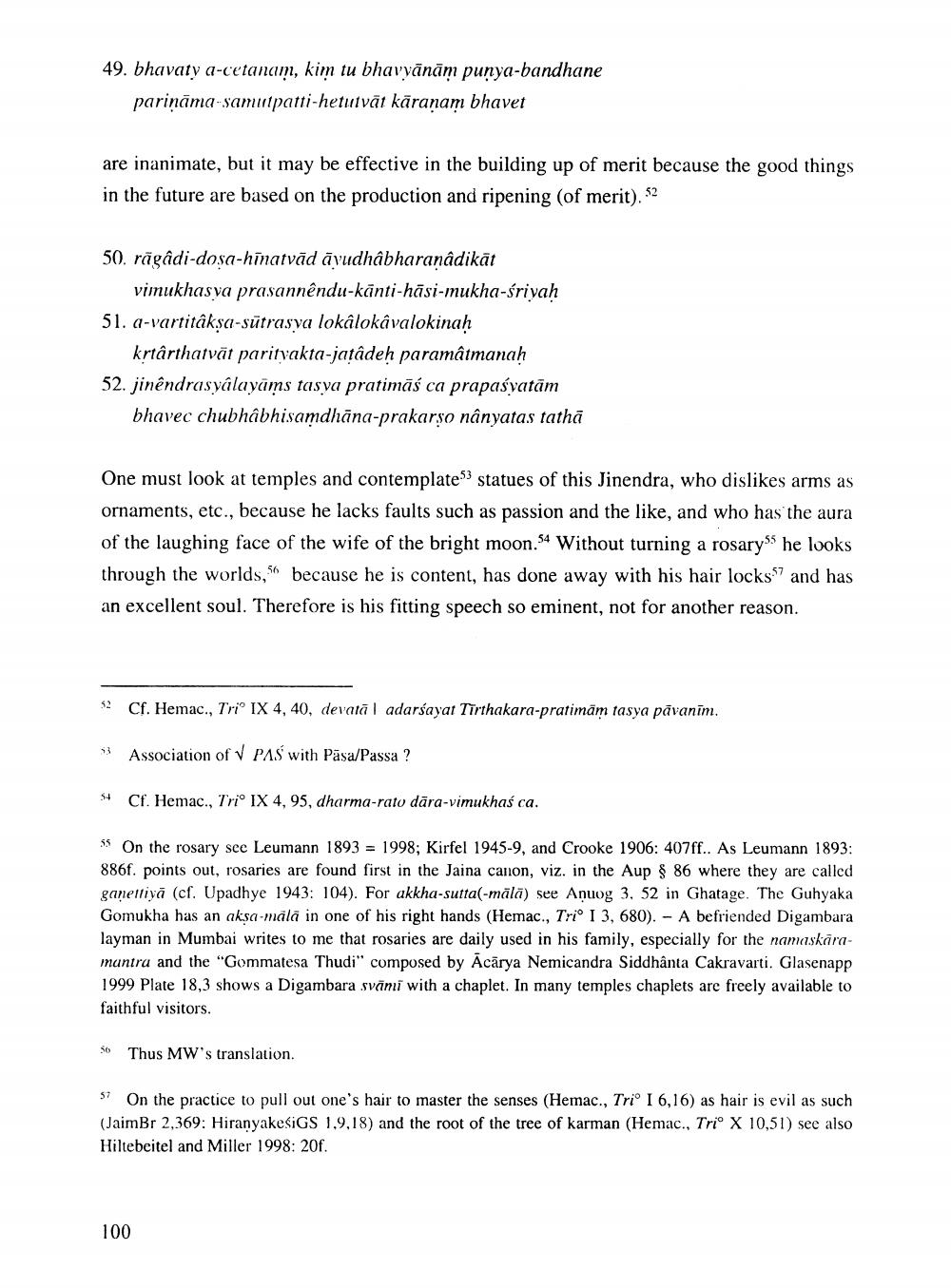________________
49. bhavaty a-cetanam, kim tu bhavyānām punya-bandhane
parināma samutpatti-hetutvāt kāranam bhavet
are inanimate, but it may be effective in the building up of merit because the good things in the future are based on the production and ripening (of merit), 52
50. rāgâdi-dosa-hinatvād āvudhâbharaṇâdikāt
vimukhasva prasannêndu-kānti-hāsi-mukha-sriyah 51. a-vartitâkşa-sūtrasva lokalokâvalokinah
krtârthatvāt paritvakta-jatâdeh paramâtmanah 52. jinêndrasyâlayāms tasya pratimāś ca prapasvatām
bhavec chubhâbhisamdhāna-prakarso nânyatas tathā
One must look at temples and contemplate3 statues of this Jinendra, who dislikes arms as ornaments, etc., because he lacks faults such as passion and the like, and who has the aura of the laughing face of the wife of the bright moon.54 Without turning a rosarys he looks through the worlds, because he is content, has done away with his hair locks and has an excellent soul. Therefore is his fitting speech so eminent, not for another reason.
52 Cf. Hemac., Trio IX 4, 40, devatā l adarśayat Tirthakara-pratimām tasya pāvanīm.
53 Association of V PAS with Pasa/Passa?
54 Cf. Hemac., Trio IX 4, 95, dharma-rato dāra-vimukhaś ca.
55 On the rosary see Leumann 1893 = 1998; Kirfel 1945-9, and Crooke 1906: 407ff.. As Leumann 1893: 886f. points out, rosaries are found first in the Jaina canon, viz. in the Aup $ 86 where they are called ganelliyā (cf. Upadhye 1943: 104). For akkha-sutta(-mālā) see Anuog 3, 52 in Ghatage. The Guhyaka Gomukha has an aksa-malā in one of his right hands (Hemac., Trio I 3, 680). - A befriended Digambara layman in Mumbai writes to me that rosaries are daily used in his family, especially for the namaskaramuntra and the "Gommatesa Thudi" composed by Acārya Nemicandra Siddhanta Cakravarti. Glasenapp 1999 Plate 18,3 shows a Digambara svāns with a chaplet. In many temples chaplets are freely available to faithful visitors.
56
Thus MW's translation.
57 On the practice to pull out one's hair to master the senses (Hemac., Trio 16,16) as hair is evil as such (JaimBr 2,369: HiranyakesiGS 1,9,18) and the root of the tree of karman (Hemac., Trio X 10,51) see also Hiltebeitel and Miller 1998: 20f.
100




